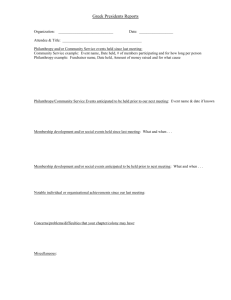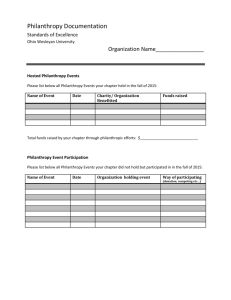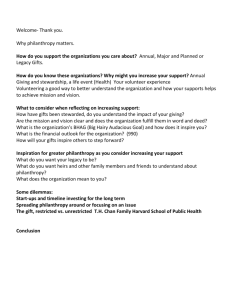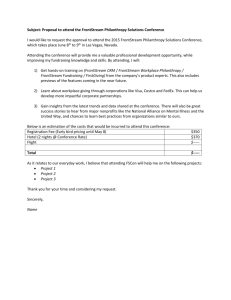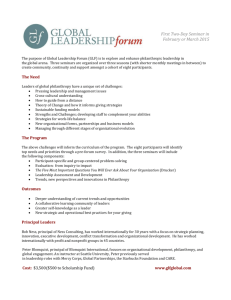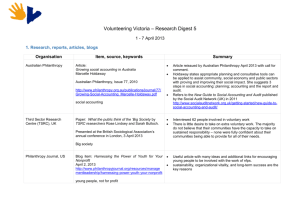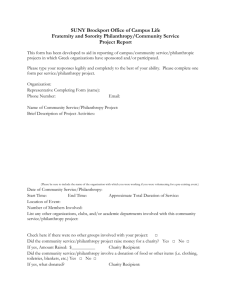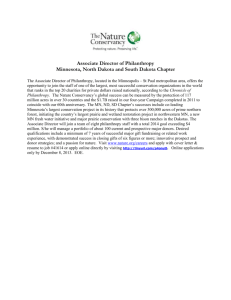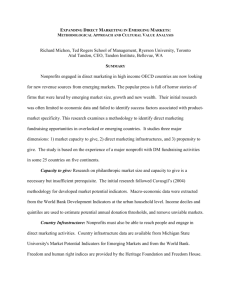Monitoring Local Change - Community Philanthropy
advertisement
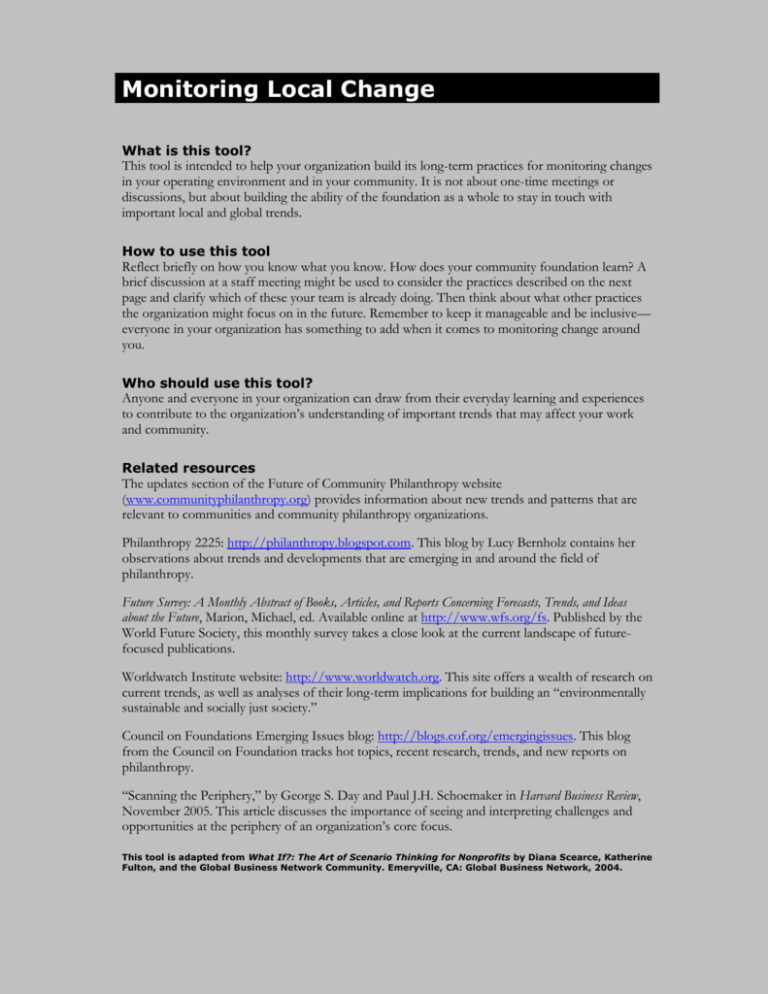
Monitoring Local Change What is this tool? This tool is intended to help your organization build its long-term practices for monitoring changes in your operating environment and in your community. It is not about one-time meetings or discussions, but about building the ability of the foundation as a whole to stay in touch with important local and global trends. How to use this tool Reflect briefly on how you know what you know. How does your community foundation learn? A brief discussion at a staff meeting might be used to consider the practices described on the next page and clarify which of these your team is already doing. Then think about what other practices the organization might focus on in the future. Remember to keep it manageable and be inclusive— everyone in your organization has something to add when it comes to monitoring change around you. Who should use this tool? Anyone and everyone in your organization can draw from their everyday learning and experiences to contribute to the organization’s understanding of important trends that may affect your work and community. Related resources The updates section of the Future of Community Philanthropy website (www.communityphilanthropy.org) provides information about new trends and patterns that are relevant to communities and community philanthropy organizations. Philanthropy 2225: http://philanthropy.blogspot.com. This blog by Lucy Bernholz contains her observations about trends and developments that are emerging in and around the field of philanthropy. Future Survey: A Monthly Abstract of Books, Articles, and Reports Concerning Forecasts, Trends, and Ideas about the Future, Marion, Michael, ed. Available online at http://www.wfs.org/fs. Published by the World Future Society, this monthly survey takes a close look at the current landscape of futurefocused publications. Worldwatch Institute website: http://www.worldwatch.org. This site offers a wealth of research on current trends, as well as analyses of their long-term implications for building an “environmentally sustainable and socially just society.” Council on Foundations Emerging Issues blog: http://blogs.cof.org/emergingissues. This blog from the Council on Foundation tracks hot topics, recent research, trends, and new reports on philanthropy. “Scanning the Periphery,” by George S. Day and Paul J.H. Schoemaker in Harvard Business Review, November 2005. This article discusses the importance of seeing and interpreting challenges and opportunities at the periphery of an organization’s core focus. This tool is adapted from What If?: The Art of Scenario Thinking for Nonprofits by Diana Scearce, Katherine Fulton, and the Global Business Network Community. Emeryville, CA: Global Business Network, 2004. MONITORING LOCAL CHANGE Blueprint Research & Design, Inc. and the Monitor Institute Page 2 Monitoring and tracking trends that may affect your community and operations is critical to keeping pace with rapidly changing circumstances. Unfortunately, “monitoring” is often ignored in the face of heavy workloads and busy schedules. But developing a monitoring system can be a simple and informal exercise that serves as a powerful yet easy tool for sustaining strategic conversations and keeping your organization attuned to shifts in the external environment. 1. As a way to start, begin to pull relevant articles and jot down observations that indicate any of the five broad forces highlighted in On the Brink of New Promise (economic pressures, demographic changes, changing expectations for regulation and accountability, the commercial sector as innovator, and changing relationships between sectors) or that suggest possible changes in the field of philanthropy and giving (locally or otherwise). You might capture an insight from conversations, radio shows, your travels, or even a roadside billboard. The point is simply to observe your daily surroundings for indicators that forces, such as regulatory pressure or new charitable organizations, are influencing your environment. Ask your staff or board members to do the same, and begin to share your findings with one another. You may want to tailor your efforts to focus on issues of concern to the foundation, but do not overlook sources and stories that appear peripheral at first glance yet could in fact affect your organization or community. 2. Create a device for capturing information about changes in the world around you. This can be as simple as posting a chart in a common space within your foundation. The chart should list each of the forces of change, along with other topics of interest, with corresponding space for posting information related to the subject. Invite staff and others to populate it with relevant clippings and experiences. 3. Monitor the work of other organizations in your community. What issues are they leading on? What contributions are they making? 4. Periodically devote a half hour at the start of staff or board meetings to discuss the trends and patterns that you notice in your observations. Capture what you learn from your discussions and monitoring activities. You might notice that innovations are emerging in the commercial sector that are not aligned with your current strategy. Or it may be that your indicators surface new opportunities, like a potential partnership. 5. Ask each board member to name the key issues or trends changing their work environment. You can do this in a meeting and then collectively look for commonalities, or you can ask them by email, cluster their responses yourself, and present them to staff or back to the board. 6. Track (informally) the number of times certain issues appear in your local newspaper over the course of a week, a month, or a few months. Meet with the editor of the paper to find out what broad issues they have on their radar screen. 7. Some trends that you surface may require further investigation. You can explore them yourselves, or partner with other community organizations or research centers like your local university to delve into the issues more deeply.
